One of the most important parts of wearing a mask is the fit. Your mask needs to fit properly, or else it isn’t protecting you or the people around you. This is why neck gaiters don’t work, why certain fabrics don’t work, and why a lot of the makeshift, homemade masks don’t work.
We want to take a moment to point out that mask-wearing isn’t necessarily restricted to the COVID-19 pandemic. It has done a lot to normalize mask usage by Americans, but wearing masks is normal in many other countries. If you’re sick, wear a mask, and you dramatically reduce how likely you are to transmit your illness to others. This can drastically reduce how common and frequent outbreaks of the common cold or the seasonal flu are.
Again, though, it helps a ton if the mask you’re wearing works. So, how do you pick the right mask? How do you make sure it fits properly?
Official Recommendations
To start with, you should know what you’re looking for with a mask fitment. A good place to start is the Centers for Disease Control and Prevention and their guidelines on masks.
- Masks should completely cover the nose and mouth, not one or the other. It can fit under the chin or simply below the mouth, depending on the design; either can work, as long as the fit is correct.
- Masks need to be snug against the face, such that there are no gaps.
The second point here is the one that many people don’t fully understand. It all has to do with airflow and how masks work.

Masks work by filtering the air you breathe, both in and out. When breathing in, the mask helps minimize any airborne contaminants you might pick up from the air around you, as they get caught in the fabric of the mask and don’t pass through into your lungs. When breathing out, the same thing happens: any contaminants in your breath are filtered out by the mask, so they don’t end up in the air that other people breathe. If the edges are sealed, you force the air to pass through the fabric of the mask instead of out around it, which filters it.
So what happens if your mask isn’t tight against your face? Air will flow along the path of least resistance. If your mask has gaps by the bridge of your nose, air will flow upwards. This is why your glasses fog up when you’re wearing a poorly fitted mask! If the mask has gaps around your ears, air will flow backward, and you’re essentially breathing behind you. While this does reduce how much you’re “blowing clouds of contaminated air” directly into people in front of you, it doesn’t do much to minimize contamination.
Of course, a mask shouldn’t be too tight, either. If it’s too tight, it will be uncomfortable to wear and will make you more likely to remove it in situations where you otherwise shouldn’t. Moreover, pressure and the small motions of moving your face will rub the mask against your skin, causing irritation, soreness, and friction burns over time.
There’s a sweet spot between too tight and too loose. You also have to get the size of the mask correct. That’s right; there are different mask sizes, and the size of the mask plays a big role in how well it works.
Determining Your Mask Size
There are a few different ways to determine the size of the mask you should be wearing. Unfortunately, there’s a ton of inconsistency out there, and if you have a face size that is out of the “average” range, you may have difficulty finding an appropriate mask.
The easiest way to determine the size of mask you’ll want is using a flexible cloth tape measure. You can find these all over, in craft sections of stores like Walmart, in craft stores like Michael’s, or on Amazon.
Using this cloth tape measure, you need to measure your face. You will be taking two measurements.
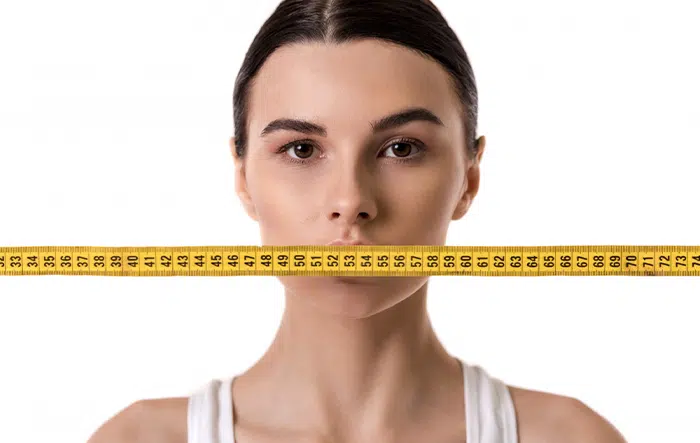
The first is the vertical height of your mask area. Start just above your nose, at the bridge of your nose, where the top edge of a mask would sit. Stretch the measuring tape down across your nose, over your lips, and under your chin. You want it tight enough that there’s very little slack in the measuring tape, but loose enough that it gives your mouth a bit of space; you don’t need to press it in under your nose or across your lips, for example.
When done properly, this measurement will typically be between 5-7 inches (12-18 cm).
The second measurement is horizontal across your face and determines the width of the mask you should be looking for. Measure this across the top of the mask area, from cheekbone to cheekbone, across the bridge of your nose. Don’t measure from ear to ear, or you’ll end up with a mask that is much too large.
Again, when done correctly, this measurement will usually range from 5-8 inches (13-22 cm).
What about if you don’t have or have access to a cloth tape measure? Well, as long as you have a ruler, you can get a reasonably accurate measurement with a piece of string. Take a piece of string around 10 inches long, and use it just like you would a fabric tape measure. The difference is, you’ll need to place one end at the starting point, and then mark the ending point, and measure the length of string on your ruler.
This method is a little less accurate, because you’ll need to accurately mark the string and measure from it, and if the string has any amount of stretchiness to it, it might stretch or contract while moving and measuring.
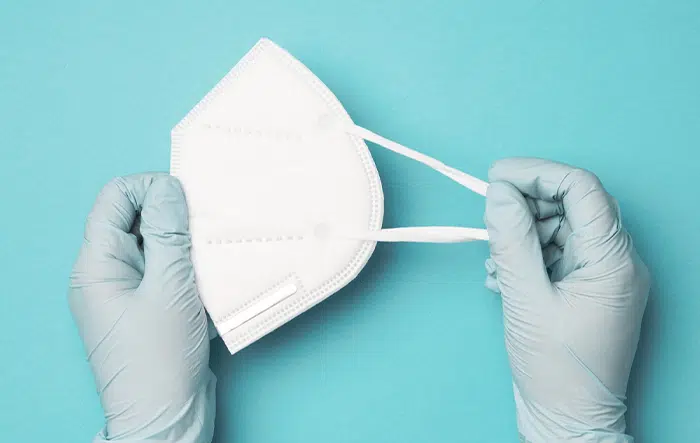
Note: Some websites have offered an alternative means of discovering your mask size, by estimating based on your height, weight, gender, and other physical attributes. The trouble is, well, have you seen people, in general? People can have widely varying face shapes and sizes compared to their bodies. Using physical attributes like these to guess at your mask size is highly unlikely to give you accurate results.
Some companies also offer an alternative measurement system. For example, one might use a simple vertical measurement from the top of your nose to the bottom of your chin, without bowing out to follow the contours of your face. The measurement is much shorter this way because it’s a straight line rather than a curved line. However, it’s also much less accurate.
Other Considerations
You may have special considerations when it comes to the mask fit.
For example, if you’re a man with a large beard, you may not be able to fit your beard in a mask. Unfortunately, wearing a mask over a large beard makes it extremely ineffective; the beard causes a gap through which air can pass, and is similar to wearing a mask with poor fit.
Of course, if you’ve been growing and grooming a beard for years, you probably don’t want to shave it. You can find some beard-fit masks on the market at a premium, which encompass your beard while still forming a tight seal around your face and neck, but these may be expensive and inconvenient.
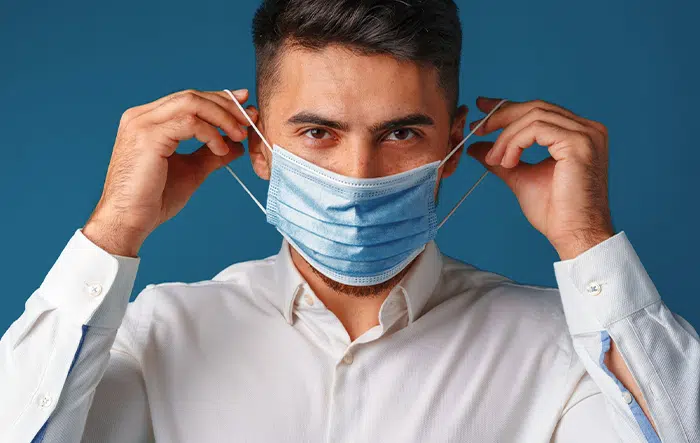
Another consideration is glasses. You want a tight mask fit if you wear glasses. One of the most common mask gaps is around the bridge of the nose. When breath escapes upwards, it fogs up glasses. A tight mask with a nosepiece helps ensure that this doesn’t happen. You can also treat your glasses with anti-fog coatings and use other tricks as well.
What about medical masks, N95s, and respirators?
- Medical masks, those thin paper/plastic blue or white masks you get from doctors’ offices, are one-time use and disposable. They serve as an adequate “bare minimum” barrier for short encounters but aren’t suitable for long-term or repeated use. We don’t recommend them except as a last resort.
- N95s come in a few different general sizes and tend to be tight. They form an adequate seal and can occasionally be reusable once or twice, but they’re still disposable masks. They can include better filters than other masks depending on the brand, but they are much more uncomfortable to wear.
- Respirators are reusable devices with replaceable filtration packs. These may or may not be adequate. They will have an adequate face seal, but many respirators are designed to filter the air coming in, but not going out. This makes them useless for the protection of others. If you choose a respirator, make sure you get one that filters breathing in both directions.
If you have any other specific concerns, feel free to reach out to us or leave a comment in the comment section below this post. We’ll get back to you as soon as we can.
Picking a Mask
Once you have your mask measurements, you can shop for a mask. The trouble here is that many mask vendors simply list the size as “small, medium, large, extra-large” and don’t provide much if any measurements. Worse yet, what might be considered a large from one company may be a medium from another.
Generally, you have three options available to you.
Option 1: Buy a one-size-fits-all mask. Some masks like the MyAir designer mask are made out of stretchy, elastic material. With their unique design with twisted ear straps, they form a complete seal and are adequate for filtering the air that you breathe.

This style of mask is reusable, with replaceable filters that can be an optional addition to help filter air. They work equally well for general use during the pandemic, for basic air travel use where you’re concerned about hydration, and for use during emergent issues like smog and poor air quality.
Option 2: Buy a mask based on your measurements. Many vendors, though far from all of them, currently offer numerical measurements for the masks that they sell. When you shop on a site online, whether it’s Etsy, eBay, Amazon, or one of the now-thousands of bespoke mask shops, you can look for measurements.
One benefit to this is that, once you have your measurements, they aren’t likely to change without some kind of drastic issue. After all, the size of your nose or your chin is unlikely to change without massive injury or another problem, right? You can keep your measurements on hand, and whenever you need to buy a new mask, you can compare the mask size with your measurements.
Option 3: Custom-order a mask. With the proliferation of cloth masks, there are thousands of people with sewing machines and fabric ready and willing to make masks to order. All you need to do is provide your measurements, pick a fabric, and make the purchase. It takes a little longer than simply picking one up off the shelf, but it might get you the best-fit mask on the market: one customized to your face.
There’s also a fourth option: use an accessory. A recent development in masking technology is the “mask brace”. A mask brace is an external accessory that presses in around the edges of the mask to form a seal even when the mask itself can’t. Mask braces are a useful accessory if you don’t have a well-fit mask, but they aren’t required if you have a mask that fits your face and seals.
Regardless of the kind of mask you get, you need your mask to fit. The better the fit, the more comfortable the mask will be for longer-term use, and the more it will protect you and those around you. We generally recommend either getting a custom-fitted mask or getting an elastic mask that fits anyone, as those are the best options for fit. The choice, at the end of the day, is up to you.
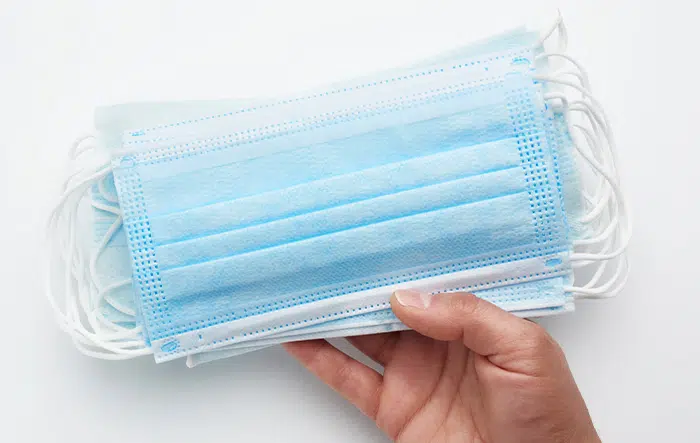
Don’t forget to get more than one mask! Masks, even reusable cloth masks, wear out over time. They should be replaced every few months, more or less, depending on how often you use them. Keep yourself safe and get a mask that fits.
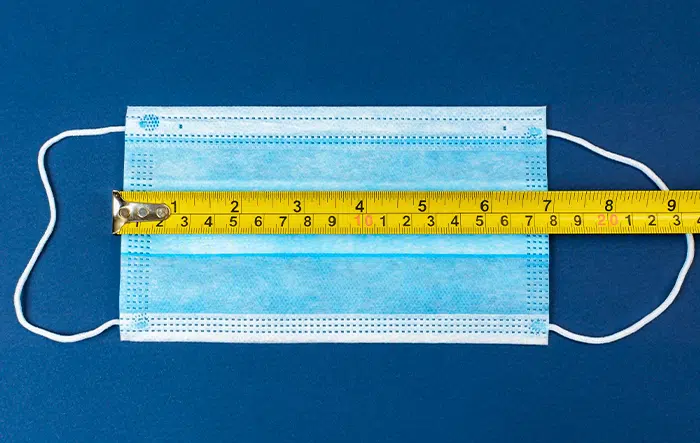
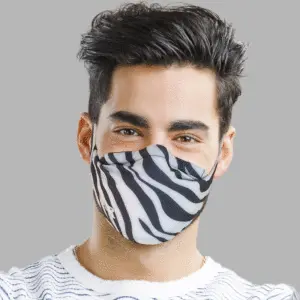
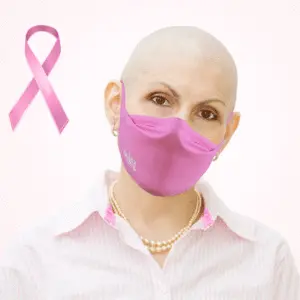

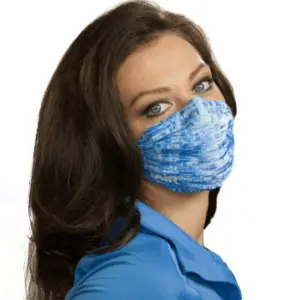
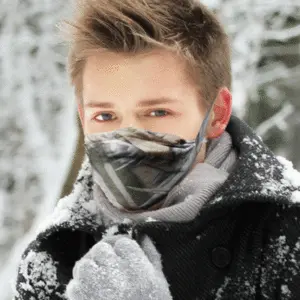
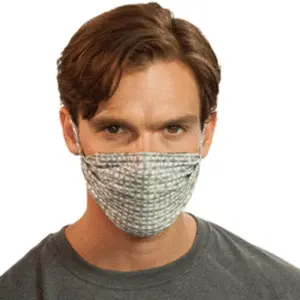
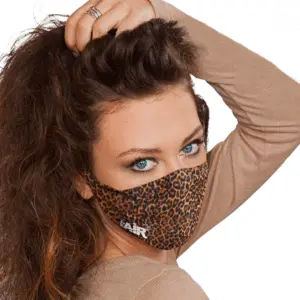
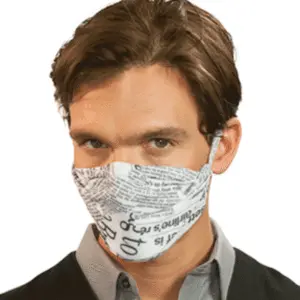



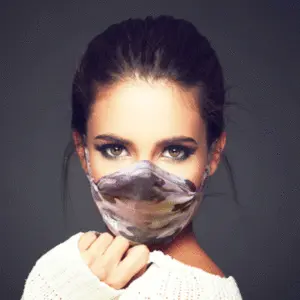
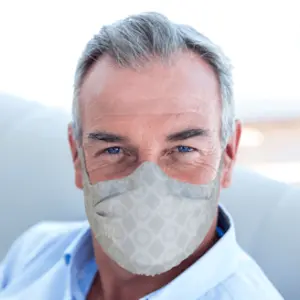
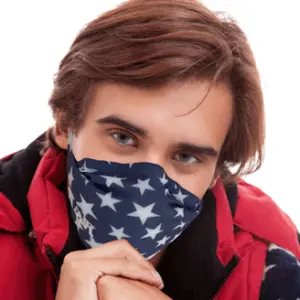

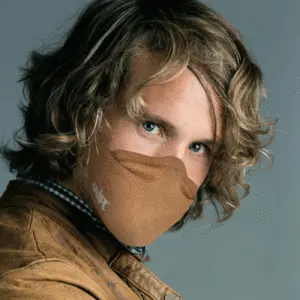

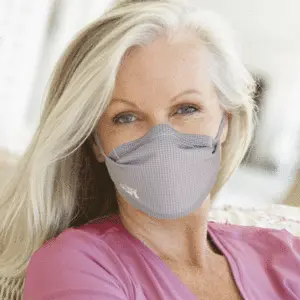
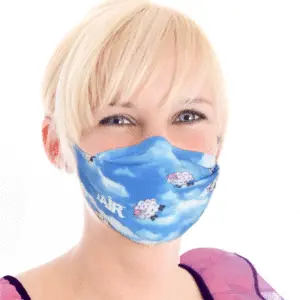
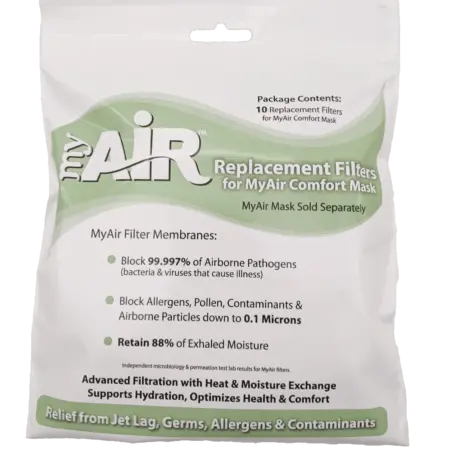
0 Comments